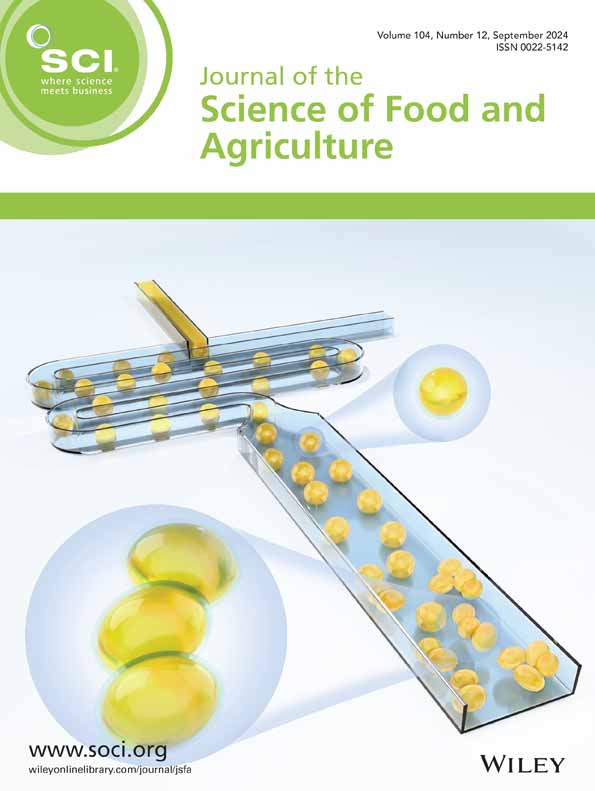Magnetic beads-based ligand fishing for rapid screening of dietary α-glucosidase inhibitory ligands from the rhizome of Alpinia officinarum Hance combined with molecular docking
Abstract
BACKGROUND
The rhizome of Alpinia officinarum Hance, considered as a medicinal and edible plant, is gathering increasing attention as a natural source for exploring dietary α-glucosidase inhibitors. Magnetic beads-based ligand fishing has shown great promise for accelerating identification of bioactive constituents from complex plant extracts. However, immobilization efficiency and stability when using different aldehyde-activated magnetic beads is still unclear. Moreover, non-specific binding hampers characterization of inhibitory ligands.
RESULTS
Immobilized enzymes on 3-carbon linker length (AGNTC-3MB) and 21-carbon linker length (AGNTC-21MB) supports were synthesized, respectively. The highest immobilization efficiency of 91.13 ± 0.40% was observed when the mass ratio of MBs-C21 to α-glucosidase was 10:1. The catalytic activity of AGNTC-21MB was four- to eight-fold higher than that of AGNTC-3MB. Additionally, after 56 days, the catalytic activity of AGNTC-21MB retained 73.4–90.3% activity – more stable than AGNTC-3MB (18.2–32.2%). In a proof-of-concept study, AGNTC-21MB-based ligand fishing led to the identification of 12 ligands. Among them, two flavonoids – kaempferol (1), galangin (6) – and three diarylheptanoids – 7-(4-hydroxyphenyl)-1-phenyl-4-hepten-3-one (9), 7-(4-hydroxy-3-methoxyphenyl)-1-henylhept-4-en-3-one (11), and 1,7-diphenyl-4-hepten-3-one (15) – exhibited significant α-glucosidase inhibitory activity, with IC50 values in the range of 23.6 ± 0.7 to 146.2 ± 3.8 μmol L−1, and showing a mixed-type behavior with Ki values ranging from 42.6 ± 2.0 to 786.0 ± 13.9 μmol L−1. Molecular docking showed compounds 6, 9, 11, and 15 bind with α-glucosidase by H-bonds, electrostatic and hydrophobic interactions.
CONCLUSION
Aldehyde-activated magnetic beads with 21-carbon linker length and AGNTC-21MB are superior to AGNTC-3MB in terms of immobilized efficiency, enzymatic activity, and stability. AGNTC-21MB-based ligand fishing combined with high-performance liquid chromatography–quadrupole time-of-flight–mass spectrometry and molecular docking constitute an effective and robust bioanalytical technology platform for analyzing antidiabetic composition in A. officinarum. Flavonoids and diarylheptanoids are responsible for the α-glucosidase inhibitory effect of the methanolic A. officinarum extract. The pharmacological and chemical profiles support further research with the aim of developing A. officinarum into functional food for prevention and management of type 2 diabetes and related complications. © 2025 Society of Chemical Industry.

 求助内容:
求助内容: 应助结果提醒方式:
应助结果提醒方式:


